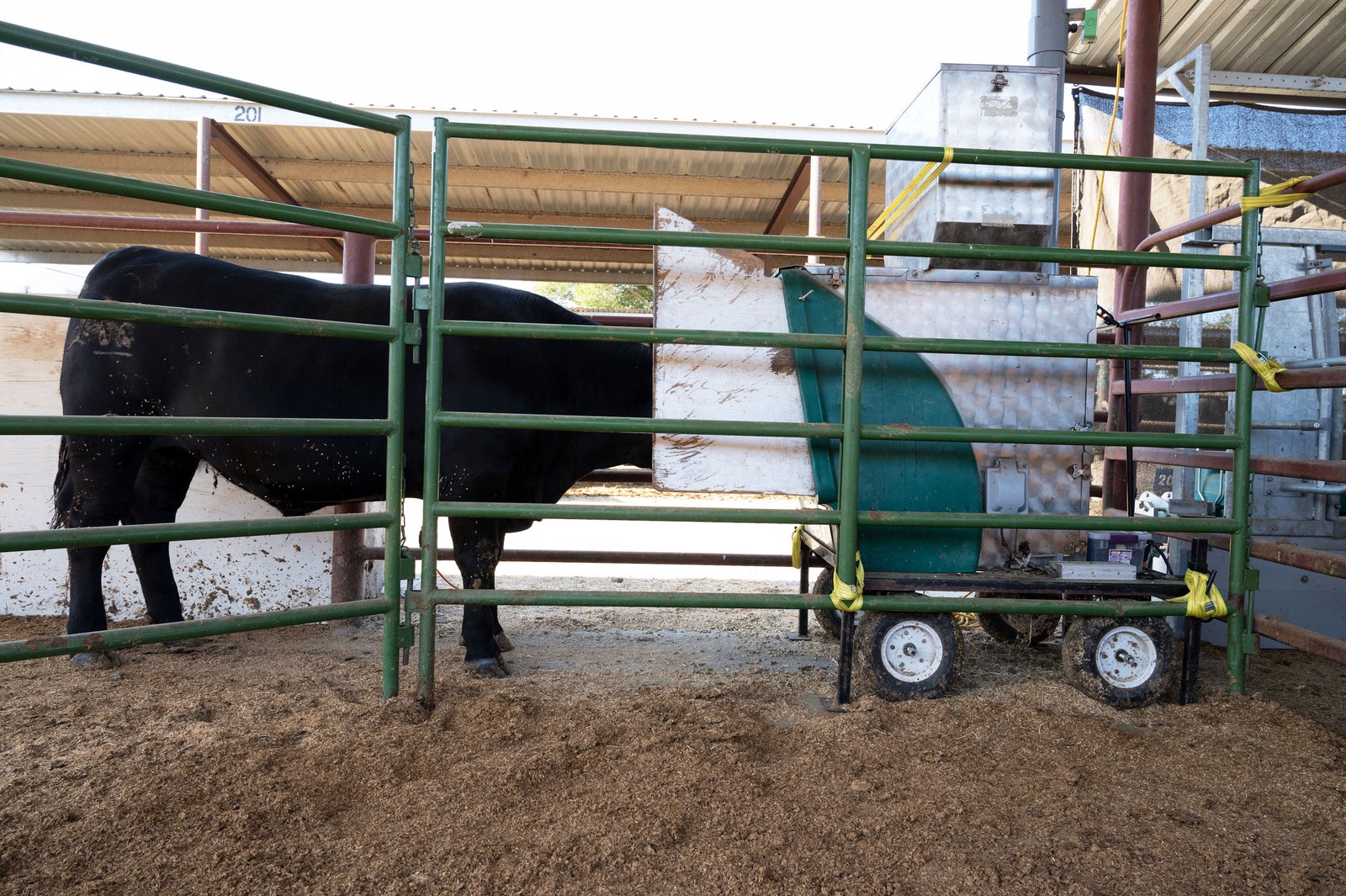It’s an oppressively hot morning in the barnyard, even in the shade of the long open-air structure where the cows come to feed. On a typical farm, they would gather around a trough, but here at UC Davis they chow from special blue bins, which detect when and how much each one eats. It’s like Weight Watchers, only researchers here aren’t so much interested in these cows’ figures, but how much they burp.
Animal scientist Frank Mitloehner leads me to another kind of feeder, one that could easily be mistaken for a miniature wood chipper. He grabs a handful of the alfalfa pellets that the machine dispenses when it detects that a cow has poked its head in. “This is like candy to them,” Mitloehner says. I stick my head into the machine as Mitloehner points out a small metal tube within: “This probe measures the methane they exhale, and that happens every three hours for all the animals in this study.”
Cows, you see, have a serious emissions problem. To digest tough plant material, their cavernous stomachs act as fermentation vats. They’re teeming with methanogens, microbes that process cellulose to make volatile fatty acids, which the cows turn into meat and milk. But those methanogens also produce methane, a particularly nasty greenhouse gas that is 80 times more potent than carbon dioxide, thanks to the way its molecules vibrate to absorb infrared radiation. These gases capture heat, and that means more global warming.
“The methane is a byproduct—an unintended consequence, I’d say—of the unique ability of ruminant animals to digest cellulose,” says Mitloehner. But just because cows can eat it doesn’t mean it’s easy for them. Because the plants cows eat are nutritionally poor, the animals have to eat a lot of food to survive, and periodically bring it back up from their four stomachs to ruminate it again—that’s “chewing the cud.” That leads to incessant burping or, as scientists call it, enteric emissions.
Now multiply those burps by the world’s huge cattle population. To satisfy humanity’s bottomless appetite for beef and milk, a billion head of cattle now roam the planet. A paper published in September in the journal Nature Food by an international team of researchers found that the global food system generates a staggering 35 percent of total greenhouse gas emissions. Beef is responsible for a quarter of those food emissions, with another 8 percent coming from milk production.
However, methane lasts only for about a decade in the atmosphere, while carbon dioxide persists for centuries. If scientists can figure out how to get cows to stop belching so much, that would make a big dent in emissions, and we’d see the climate effects almost immediately. So Mitloehner and other researchers are experimenting with food additives like seaweed, garlic, and even essential oils derived from plants like coriander seed, which tweak the animals’ gut environment in different ways, for instance by disrupting the enzymes that produce methane. They’re also playing around with biochar—charcoal, basically—which soaks up methane in the gut.
That’s why Mitloehner is going to such lengths to quantify his cows’ diets: Using the high-tech troughs and snack-dispensing methane detectors, he can show how well a particular technique might reduce enteric emissions. “We have found that, depending on what additive you are dealing with, we can reduce enteric emissions anywhere between 10 to 50 percent, and that is sensational,” says Mitloehner.
Courtesy of UC Davis



